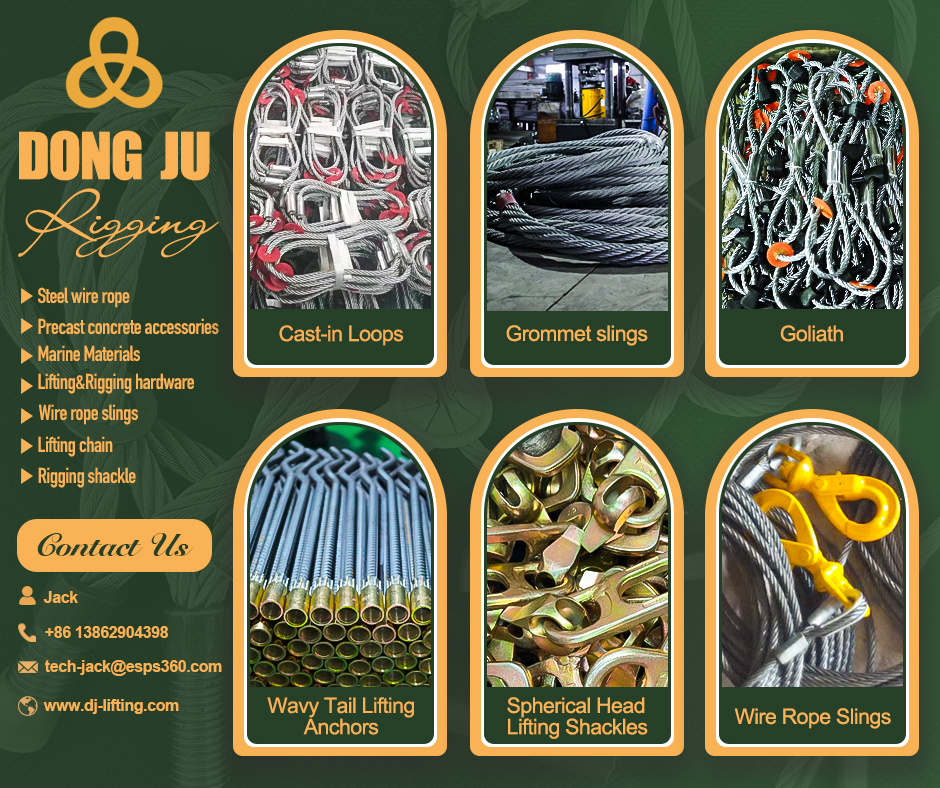With the vigorous development of China's construction industry, infrastructure such as railway stations and bridges in high-speed rail construction, combined with the continuous improvement of the level of automation in social industrial production, the breadth and depth of the application of rigging equipment will further increase in the future. Rigging equipment has a wide range of applications, suitable for various industrial manufacturing fields, large-scale lifting fields, and various engineering construction fields. The faster the development of heavy industry in China, and the more standardized industrial enterprises, the more the demand for rigging equipment will increase. Nantong Dongju believes that rigging products, which play an important role in the construction process, should have reliable quality and excellent performance at this time, so as to provide strong support for the rapid development of our country.
As a professional rigging equipment manufacturing enterprise, Dongju has been committed to the comprehensive improvement of the quality of rigging equipment, steel wire rope rigging, lifting pulleys, unhookers, and other products, ensuring the quality of products is guaranteed. With the increasingly extensive application scope, the comprehensive performance of Dongju products has also been recognized by users. It is believed that in various construction fields in the future, Dongju products will definitely achieve ideal results.
Preventing rigging equipment failure from three aspects
Rigging equipment has a wide variety and complex usage environments, and the quality of personnel varies, which makes the lifting operation process have many potential risks. At present, rigging equipment failure accidents frequently occur due to poor management or improper use. From the perspective of safety management, Shengli believes that preventing rigging equipment failure should start from these three aspects:
1.Include crane rigging equipment in national safety supervision as soon as possible. Relevant departments of the state should formulate corresponding management standards, implement comprehensive safety supervision and inspection on the design, manufacturing, inspection, and use management of rigging equipment. Rigging equipment production enterprises implement the system of "production license" or "safety accreditation certificate" to eliminate unlicensed production. Enterprises implement a regular safety inspection system for rigging equipment in use. Those that do not meet safety requirements are forcibly scrapped to reduce failure accidents from the perspective of safety supervision.
2.Enterprises themselves should also strengthen the safety management of rigging equipment in use. According to the actual production, formulate corresponding rigging equipment safety management systems, comprehensively register rigging equipment in use, and establish detailed cards for rigging equipment. Hang nameplates on each rigging equipment, indicating the name, model, rated load, and date of commissioning of the rigging equipment. Strengthen the daily safety management of rigging equipment, implement special personnel management, special use, fixed-point storage, regular inspection, timely scrapping, and do a good job in the maintenance and maintenance of rigging equipment.
3.Strengthen the safety training of rigging equipment users. While strengthening safety publicity and education, emphasis should be placed on enhancing their safety technical quality. Users should master the basic safety technical knowledge of rigging equipment, be familiar with the basic performance or use requirements of the rigging equipment used, master the safety inspection methods and scrapping standards of the rigging equipment used, etc. Only by mastering the basic safety knowledge and reasonably applying it in practice can the safe use of rigging equipment be ensured and the occurrence of failure accidents be avoided. Rigging equipment failure not only delays working time and reduces work efficiency but also may cause various accidents, and the consequences are very serious. The prevention of rigging equipment failure ultimately emphasizes safety issues, which involve many aspects of rigging equipment use and management. You should always keep safety in mind.








 QQ
QQ